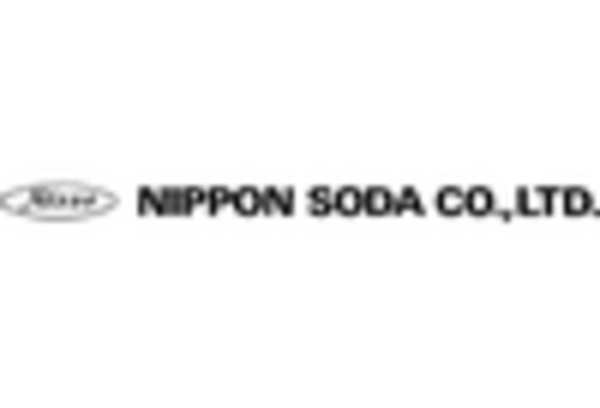Expansion of Horticultural Practices
The Plant Antifreeze Market is significantly influenced by the expansion of horticultural practices across various regions. As urbanization continues to rise, there is a growing interest in home gardening and landscaping, which necessitates the use of antifreeze products to protect ornamental plants and vegetables from frost damage. This trend is particularly evident in temperate regions where seasonal temperature fluctuations pose a risk to plant health. The increasing number of gardening enthusiasts and the rise of community gardens are contributing to a surge in demand for plant antifreeze solutions. Market data indicates that the horticultural segment is expected to account for a substantial share of the Plant Antifreeze Market, potentially reaching 30% by 2026.
Climate Change and Weather Variability
The impact of climate change is becoming increasingly apparent, influencing the Plant Antifreeze Market in various ways. Unpredictable weather patterns and extreme temperature fluctuations are prompting farmers and gardeners to seek reliable antifreeze solutions to protect their crops. As colder weather events become more frequent, the need for effective plant protection products is likely to rise. This situation presents a unique opportunity for manufacturers to innovate and develop products that can withstand these changing conditions. Analysts predict that the market could see a growth rate of 8% annually as stakeholders adapt to the challenges posed by climate change, thereby reinforcing the importance of the Plant Antifreeze Market.
Increased Awareness of Crop Protection
There is a growing awareness among farmers and agricultural stakeholders regarding the importance of crop protection, which is significantly benefiting the Plant Antifreeze Market. Educational initiatives and outreach programs are helping to inform growers about the risks associated with frost damage and the benefits of using antifreeze products. This heightened awareness is leading to increased adoption rates of plant antifreeze solutions, particularly in regions prone to cold weather. Market Research Future indicates that as more farmers recognize the value of investing in crop protection, the demand for antifreeze products is expected to rise. This trend could potentially enhance the market's growth trajectory, with projections suggesting a 12% increase in sales over the next few years.
Rising Demand for Sustainable Agriculture
The Plant Antifreeze Market is experiencing a notable increase in demand driven by the global shift towards sustainable agricultural practices. Farmers are increasingly seeking eco-friendly solutions that minimize environmental impact while ensuring crop protection. This trend is reflected in the growing adoption of organic farming methods, which often require specialized antifreeze products to safeguard plants during colder months. According to recent data, the market for sustainable agricultural products is projected to grow at a compound annual growth rate of approximately 10% over the next five years. This shift not only enhances crop yield but also aligns with consumer preferences for sustainably sourced food, thereby propelling the Plant Antifreeze Market forward.
Technological Innovations in Formulations
Technological advancements are playing a pivotal role in shaping the Plant Antifreeze Market. Innovations in formulation chemistry have led to the development of more effective and efficient antifreeze products that offer enhanced protection against frost and freezing temperatures. These new formulations often incorporate natural ingredients, which appeal to environmentally conscious consumers. Furthermore, the integration of smart technologies, such as temperature sensors and automated application systems, is becoming increasingly prevalent. This technological evolution is expected to drive market growth, as it allows for precise application and improved efficacy. Market analysts suggest that the introduction of these advanced products could increase market penetration by up to 15% in the coming years.


















Leave a Comment